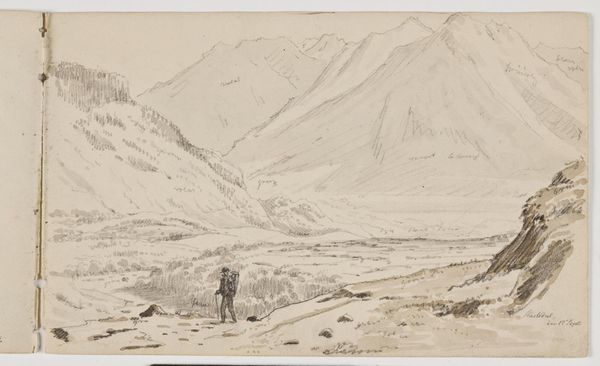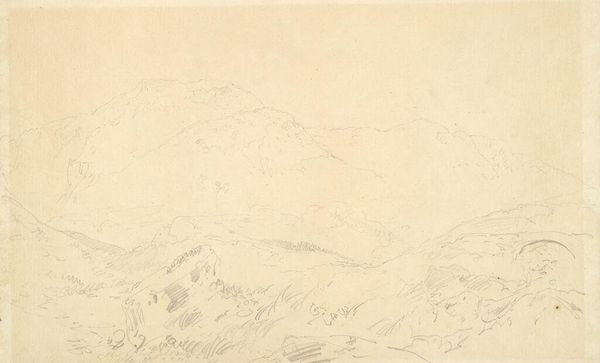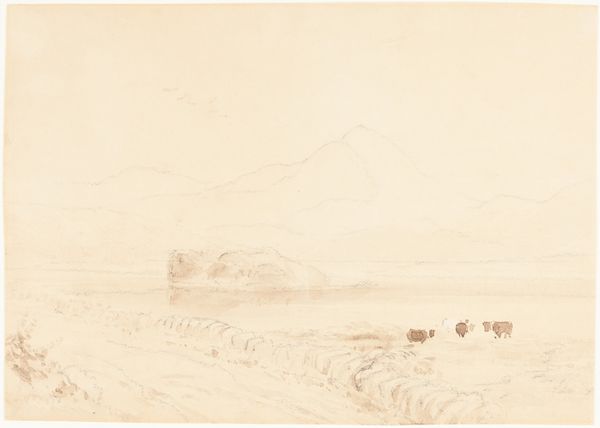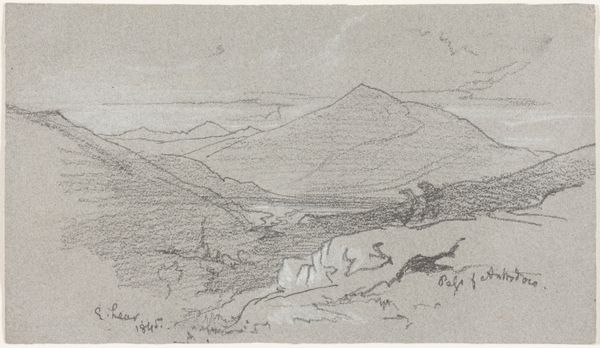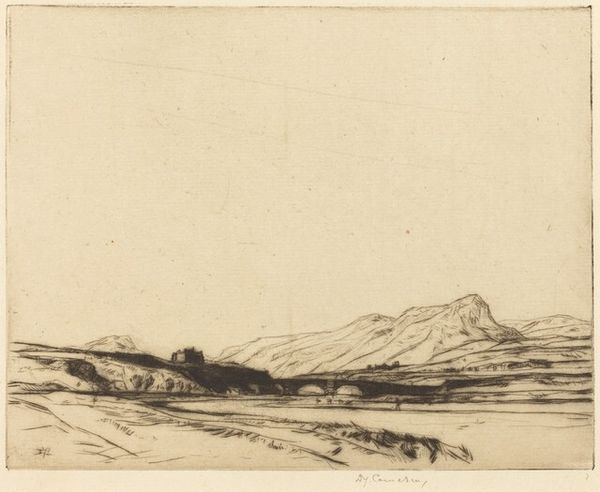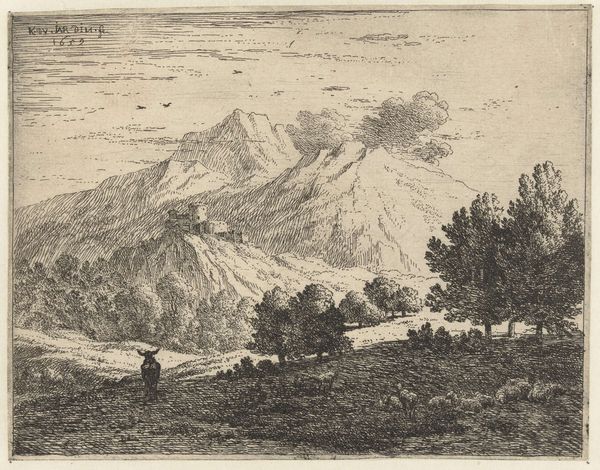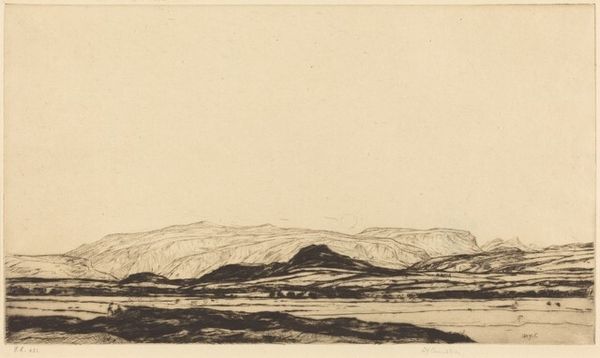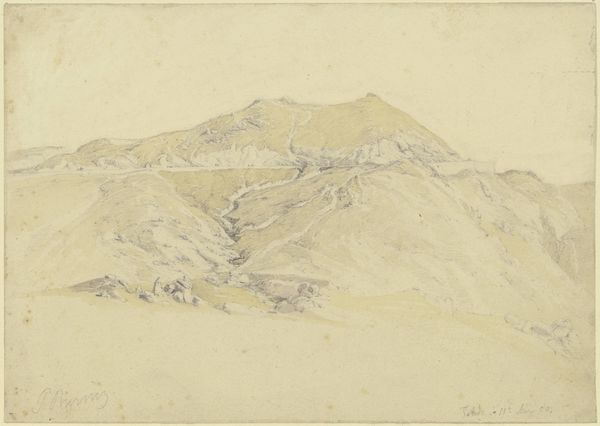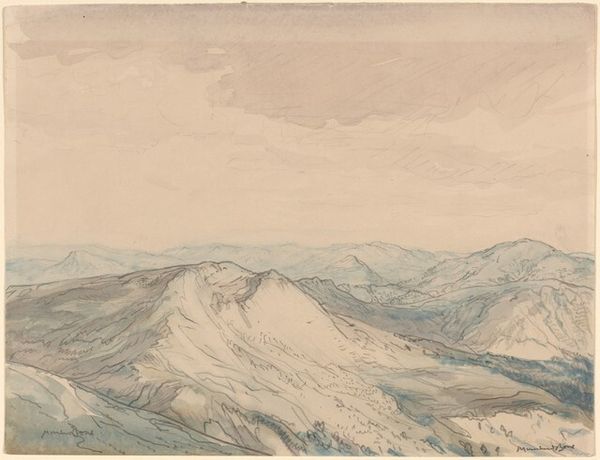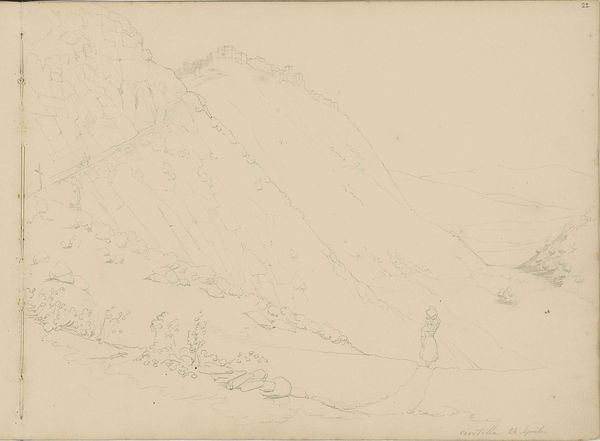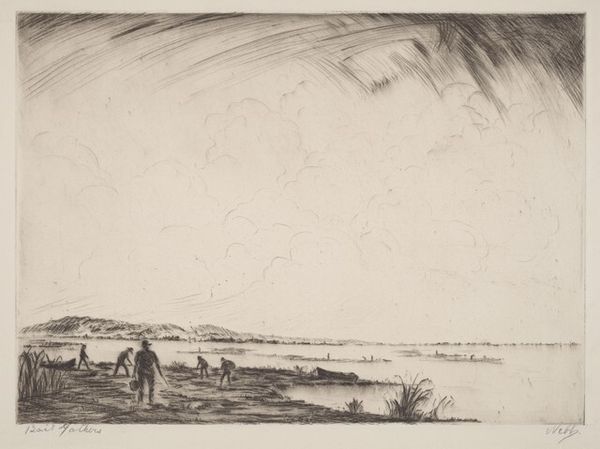
print, etching, pencil
# print
#
etching
#
pencil sketch
#
landscape
#
pencil
#
history-painting
#
watercolor
Copyright: National Gallery of Art: CC0 1.0
Curator: What strikes me immediately is the openness of this landscape, so stark and quiet. Editor: Indeed, it's interesting how James McBey captured that desolation. The artwork, titled "Hermon: Cavalry Moving on Damascus," an etching likely made between 1918 and 1921, presents an image of military movement within a very barren terrain. I am intrigued by the date of origin. Curator: The title gives it all away, doesn’t it? A cavalry, rendered as a tiny smudge on the horizon. Yet, this makes me consider something I often forget: How vast and indifferent is our surrounding landscape to the affairs of humankind. What a strange choice to depict such a loaded historical moment. Editor: Precisely! The intentionality of McBey situating such violence on a massive stage brings forth important context: that of British colonial activity after World War I. It’s vital to consider whose land the cavalry traversed. In which bodies of water the horses drank. Curator: Bodies of water, of course. How crucial, then, this landscape becomes! Water means control; water means life. But visually speaking, McBey almost erases those precious sources. It looks as dry as a bone. Perhaps a sign of colonial hubris? Editor: Or a nod towards the mythologies that justified colonial occupation. This etching asks us to unpack assumptions about heroism and adventure inherent in artistic representations of warfare. Note also the mountain of Hermon itself; it almost seems like it’s silently observing, looming above it all. Curator: And etched in such subtle detail! It really speaks to the fragility and the endurance of the earth itself. McBey reduces the riders almost to specks on this immensity. It’s a beautiful balance between meticulous artistry and emotional depth. Editor: What does the relationship between landscape and figure communicate? In which ways do history and the politics of its creation influence our appreciation? I invite viewers to sit with McBey's work and consider how, even in seeming sparseness, art can evoke a multiplicity of perspectives. Curator: And with that consideration, it feels right to let the quiet power of "Hermon: Cavalry Moving on Damascus" speak for itself.
Comments
No comments
Be the first to comment and join the conversation on the ultimate creative platform.

